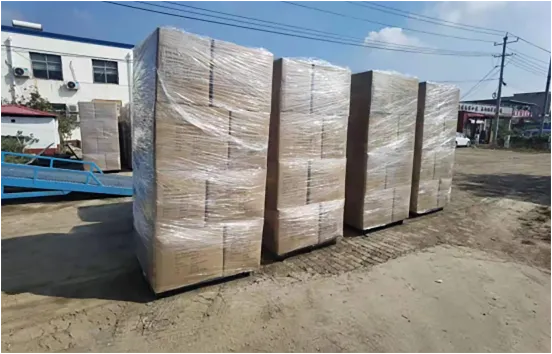https://www.wahmg.com/)">
plastic soda bottles
plastic soda bottles
The Impact of Plastic Soda Bottles on the Environment
Plastic soda bottles have become ubiquitous in our daily lives, serving as a convenient container for one of the most popular beverages worldwide. However, behind their convenience lies a troubling environmental impact that has garnered attention in recent years. From production to disposal, the journey of plastic soda bottles raises significant concerns about sustainability and ecological preservation.
To begin with, the production of plastic bottles contributes to a significant carbon footprint. Most soda bottles are made from polyethylene terephthalate (PET), a type of plastic derived from petroleum. The extraction and processing of fossil fuels not only consume vast amounts of energy but also release greenhouse gases into the atmosphere, exacerbating climate change. In fact, it is estimated that the production of one ton of PET emits around 3.89 tons of carbon dioxide. The demand for plastic bottles continues to rise, leading to increased environmental strain.
Once consumed, the fate of plastic soda bottles becomes a critical issue. While many consumers may believe that their bottles will be responsibly recycled, the reality is often grim. According to the Environmental Protection Agency (EPA), only about 30% of PET bottles are recycled in the United States. The rest end up in landfills or, worse, in our oceans, contributing to the global plastic waste crisis. These bottles can take hundreds of years to decompose, leading to the accumulation of plastic debris that poses a threat to marine life and ecosystems.
plastic soda bottles

In addition to the long decomposition time, the presence of plastic bottles in our oceans has dire consequences for wildlife. Marine animals often mistake plastic for food, leading to ingestion that can cause malnutrition, internal injuries, or even death. Additionally, larger pieces of plastic can break down into microplastics, which infiltrate the food chain and eventually reach human consumers. The ingestion of microplastics is a growing concern, as their health impacts on humans remain largely unknown but are likely to be harmful.
Given these challenges, it is clear that we need to rethink our relationship with plastic soda bottles. One potential solution is to encourage the widespread adoption of reusable containers. By utilizing stainless steel or glass bottles, consumers can significantly reduce their reliance on single-use plastics. Furthermore, companies can take proactive steps by implementing sustainable packaging solutions or using biodegradable materials. Promoting a circular economy, where materials are reused and recycled efficiently, can also help address the waste generated by plastic bottles.
Public awareness and education play a vital role in combatting the plastic crisis. Initiatives to inform consumers about the environmental consequences of their choices can motivate individuals to make more sustainable decisions. Community clean-up events and local recycling programs can further engage the public and foster a sense of responsibility towards our planet.
In conclusion, while plastic soda bottles offer convenience in our fast-paced world, their negative environmental impact cannot be ignored. Through collective action—from individual choices to corporate responsibility and government policy—we can strive toward a more sustainable future, reducing our dependency on plastic and preserving our environment for generations to come.
-
Wholesale Plastic Juice Bottles with Caps 16 oz Options Available Bulk Packaging SolutionsNewsJun.10,2025
-
Laboratory Apparatus Reagent Bottle – Durable & Chemical Resistant Bottles for Safe StorageNewsJun.10,2025
-
Squeezable Dropper Bottles Durable, Leak-Proof & CustomizableNewsMay.30,2025
-
Affordable Plastic Petri Plates Sterile & Disposable Lab-GradeNewsMay.30,2025
-
Eye Dropper Caps Precision 24/410 & Plastic Bottle-Compatible TipsNewsMay.30,2025
-
Affordable Mini Spray Bottle Price & Wholesale Deals Shop NowNewsMay.29,2025





















